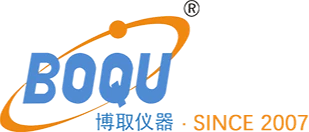Expert in Water Quality Measurement and Water Treatment Project Since 2007
How Submersible Level Transmitters Help Ensure Food Safety
Submersible Level Transmitters: Safeguarding Food Safety through Precision Monitoring
Introduction to Submersible Level Transmitters and Food Safety Challenges
Food safety is a critical concern for consumers, regulatory authorities, and food manufacturers alike. Ensuring that the food we consume is free from contaminants and meets stringent quality standards is vital for the well-being of individuals and the reputation of businesses. As technology advances, the use of submersible level transmitters has emerged as an essential tool in maintaining a safe food supply chain.
Submersible level transmitters are sophisticated instruments that play a crucial role in monitoring and controlling liquid levels in various applications. In the context of the food industry, these transmitters provide accurate and real-time measurements of liquid levels in tanks, vats, and containers where food ingredients, additives, or products are stored. They enable food manufacturers to mitigate potential risks, enhance operational efficiency, and uphold food safety standards with confidence.
How Submersible Level Transmitters Work
Submersible level transmitters employ cutting-edge technology to ensure accurate measurements in challenging environments, such as tanks filled with liquids. The transmitter consists of a pressure sensor encapsulated in a waterproof housing designed to withstand submersion. This allows the unit to be installed directly into liquid containers, minimizing the risk of contamination and ensuring precise readings.
The pressure sensor within the submersible level transmitter measures the pressure exerted by the liquid column above it. By converting this pressure into electrical signals, the transmitter provides valuable insights into the liquid level. These signals are then transmitted to a control system or display unit, enabling operators to monitor the level in real-time and take prompt action if necessary.
Mitigating Contamination Risks through Accurate Monitoring
Contamination of food products can occur at various stages within the supply chain. From raw materials to finished products, every step must be closely monitored to prevent the introduction of foreign matter, spoilage, or bacterial growth. Submersible level transmitters serve as an effective tool in identifying potential risks and safeguarding food safety.
With precise and continuous monitoring, submersible level transmitters can alert operators to unexpected changes in liquid levels. Sudden fluctuations in level readings may indicate the presence of leaks, contamination, or improper storage conditions, leading to timely interventions and corrective measures. By proactively addressing these issues, manufacturers can prevent compromised food quality and potential distribution of unsafe products.
Optimizing Efficiency and Quality Assurance
In addition to their role in maintaining food safety, submersible level transmitters contribute to enhancing operational efficiency and quality assurance within the food industry. By ensuring accurate and reliable monitoring of liquid levels, these transmitters aid in optimizing production processes, minimizing downtime, and reducing wastage.
Proper monitoring of liquid levels allows for effective inventory management and resource planning. By having real-time visibility into ingredient or product levels, manufacturers can avoid unnecessary delays in production caused by running out of essential components. This not only ensures continuous production but also maximizes productivity and minimizes costly disruptions.
Compliance with Regulatory Standards
Regulatory bodies around the world have set stringent standards to safeguard food safety. Submersible level transmitters assist food manufacturers in meeting these compliance requirements by providing accurate documentation of liquid levels throughout the production and storage processes.
Using submersible level transmitters, manufacturers can generate comprehensive reports that demonstrate compliance with regulatory guidelines. These reports provide an audit trail, enabling authorities or auditors to assess the safety and quality of the food products throughout the different stages of production.
Conclusion:
Submersible level transmitters are essential tools in maintaining food safety and quality assurance within the food industry. By providing real-time and precise measurements of liquid levels, these instruments help mitigate contamination risks, optimize efficiency, and ensure compliance with regulatory standards. As technology continues to advance, submersible level transmitters will undoubtedly play an increasingly vital role in upholding food safety throughout the food supply chain.
Contact Us
Office Add:No. 118 Xiuyan Road,Pudong New Area,Shanghai,Zip Code:201315,China
Contact us right away
BOQU Instrument focus on development and production of water quality analyzers and sensors, including water quality meter, dissolved oxygen meter, pH sensors, etc.
